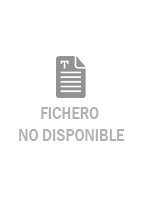Por favor, use este identificador para citar o enlazar este ítem:
https://hdl.handle.net/11000/34397Registro completo de metadatos
| Campo DC | Valor | Lengua/Idioma |
|---|---|---|
| dc.contributor.author | Andreu Rodriguez, Francisco Javier | - |
| dc.contributor.author | Blesa Marco, Zbigniew Emil | - |
| dc.contributor.author | Sáez Tovar, Jose Antonio | - |
| dc.contributor.author | Pedraza Torres, Angie Marcela | - |
| dc.contributor.author | Martínez Sabater, Encarnación | - |
| dc.contributor.author | Orden, Luciano | - |
| dc.contributor.author | Bustamante, Maria Angeles | - |
| dc.contributor.author | Marhuenda-Egea, Frutos Carlos | - |
| dc.contributor.author | López, María J. | - |
| dc.contributor.author | Suárez Estrella, Francisca | - |
| dc.contributor.author | Moral, Raul | - |
| dc.contributor.other | Departamentos de la UMH::Ingeniería | es_ES |
| dc.date.accessioned | 2025-01-11T16:27:19Z | - |
| dc.date.available | 2025-01-11T16:27:19Z | - |
| dc.date.created | 2023-06 | - |
| dc.identifier.citation | Environmental Pollution Volume 333, 15 September 2023 | es_ES |
| dc.identifier.issn | 1873-6424 | - |
| dc.identifier.issn | 0269-7491 | - |
| dc.identifier.uri | https://hdl.handle.net/11000/34397 | - |
| dc.description.abstract | This work evaluates the effect of agricultural plastic waste (APW) in two particle sizes, microplastic and film debris, and subjected to a pre-treatment by exposure to UV-C, in the development of the vermicomposting process. Eisenia fetida health status and metabolic response and the vermicompost quality and enzymatic activity were determined. The environmental significant of this study is mainly related to how can affect plastic presence (depending on plastic type, size and/or if it is partially degraded) not only to this biological process of organic waste degradation, but also to the vermicompost characteristics, since these organic materials will be reintro duced in the environment as organic amendments and/or fertilizers in agriculture. The plastic presence induced a significant negative effect in survival and body weight of E. fetida with an average decrease of 10% and 15%, respectively, and differences on the characteristics of the vermicomposts obtained, mainly related with NPK content. Although the plastic proportion tested (1.25% f. w.) did not induce acute toxicity in worms, effects of oxidative stress were found. Thus, the exposure of E. fetida to AWP with smaller size or pre-treated with UV seemed to induce a biochemical response, but the mechanism of oxidative stress response did not seem to be dependent on the size or shape of plastic fragments or pre-treated plastic. | es_ES |
| dc.format | application/pdf | es_ES |
| dc.format.extent | 10 | es_ES |
| dc.language.iso | eng | es_ES |
| dc.publisher | Elsevier | es_ES |
| dc.rights | info:eu-repo/semantics/closedAccess | es_ES |
| dc.rights | Attribution-NonCommercial-NoDerivatives 4.0 Internacional | * |
| dc.rights.uri | http://creativecommons.org/licenses/by-nc-nd/4.0/ | * |
| dc.subject | Ecotoxicology | es_ES |
| dc.subject | Film debris | es_ES |
| dc.subject | Microplastic | es_ES |
| dc.subject | Earthworm | es_ES |
| dc.subject | Agricultural plastic waste | es_ES |
| dc.subject | Environmental implication | es_ES |
| dc.title | Effect of agricultural microplastic and mesoplastic in the vermicomposting process: Response of Eisenia fetida and quality of the vermicomposts obtained | es_ES |
| dc.type | info:eu-repo/semantics/article | es_ES |
| dc.relation.publisherversion | https://doi.org/10.1016/j.envpol.2023.122027 | es_ES |
 Ver/Abrir:
Ver/Abrir:1-s2.0-S0269749123010291-main.pdf
3,55 MB
Adobe PDF
Compartir:
 La licencia se describe como: Atribución-NonComercial-NoDerivada 4.0 Internacional.
La licencia se describe como: Atribución-NonComercial-NoDerivada 4.0 Internacional.
.png)